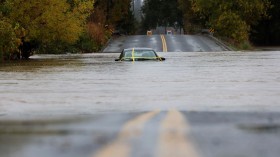They may not have brooms, mops or even arms, but bivalves - such as clams, mussels and oysters - make good underwater maids, a new study suggests.
These marine creatures serve as a sort of water filtration system, unintentionally ridding water of any pollutants present, like herbicides, pharmaceuticals and flame retardants.
According to researchers at Stanford University in California, as these bivalves sieve the water surrounding them in search for bacteria or phytoplankton to eat, their tissues absorb some of the chemicals and pathogens floating around as well.
To see just how effective this toxin cleanup is, researchers placed California floater mussels and Asian clams into a tank with treated wastewater that contained various levels of contamination. Within 72 hours, the shellfish had removed up to 80 percent of some of the contaminants from the water, according to the researchers.
After seeing what these bivalves can do, the study team decided to put them to work. They want to put clams and mussels into Mountain Lake, a body of water in San Francisco that is reportedly heavily contaminated with harmful bacteria and other pollutants.
However, they still have to figure out how to deploy these underwater maids.
"We are considering using a raft carrying caged native bivalves, which will allow us to monitor the health of the bivalves and also protect them from predators," study lead author Niveen Ismail, a Stanford graduate student in environmental engineering, said in a statement.
This method of introducing oysters and other shellfish involves placing the animals in a tray or cage and suspending them in water from an anchored raft. It has been used before in places such as the Bronx River and Long Island Sound, the authors say.
This shows that conserving these species is not only vital to their survival, but to humans' health as well.
"We would be doing two things here - restoring ecosystems and cleaning water," added co-author Richard Luthy.
The study findings were published July 13 in the journal Environmental Science & Technology.
© 2024 NatureWorldNews.com All rights reserved. Do not reproduce without permission.


